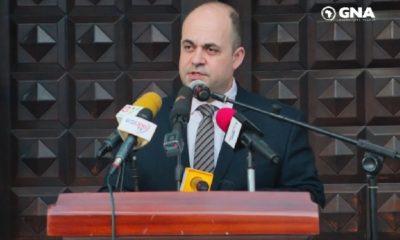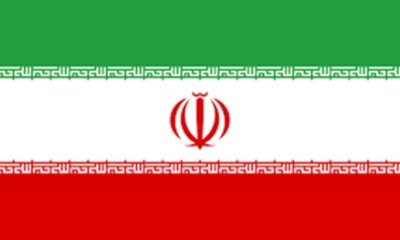Finance
FULL TEXT: Ghana’s oil money on dried dams

The report, Ghana’s Oil Money on Dried Dams is a product of One Village, One Dam Expenditure and Performance Tracking project implemented by the Coalition of Northern Ghana CSOs led by Northern Patriots in Research and Advocacy (NORPRA) in 2022/2023.
The project which received funding support from the Africa Centre for Energy Policy (ACEP) under its Extractive Industry and Climate Change Governance Fund was implemented in the poorest districts in five regions in northern Ghana. The report was launched by Prof. David Millar, former Pro-VC of University for Development Studies and Board Chairman of NORPRA in Bolgatanga.
The Project
The project with an objective of influencing increased responsiveness, transparency and accountability of public resource management for effective implementation of pro-poor policies, undertook public expenditure tracking of 285 small earth dams in five regions in northern Ghana.
The project also mobilized beneficiary communities of the dams and facilitated the communities’ assessments of these dams through focus group discussions and community score card exercises against the One Village, One Dam (1V1D) policy objectives of improving agricultural productivity, food security, jobs and reduction in out-migration in poverty-stricken northern Ghana.
Tracking Results
In tracking the public expenditure of the dams, the Budget Statements and Economic Policies of the Government and the Annual Petroleum Funds Reports for the period 2017 -2021 were reviewed. Data on how much was spent on each of the 285 dams and consultancy fees for the construction of the dams were also sourced from available documents at the Special Development Initiative Secretariat in the office of the President of Ghana and the Northern Development Authority through key informants.
The expenditure tracking exercise showed that a total of Two Hundred and One Million, One Hundred and Thirteen Thousand, Eight Hundred and Seventy-Five Ghana Cedis (GH¢201,113,875) of the Annual Budget Funding Amount (ABFA) of Ghana’s petroleum revenue was spent on the 285 1V1D projects with an average cost per dam being GH¢670,350.00 across the five regions in northern Ghana. This is far in excess of the GH¢250,000 sighted in contract award letters for construction of each dam.
It was also found that payment for construction of some dams in Yunyoo, Mion and Tolon communities exceeded contract sums.
Consultancy services fees for construction supervision of the dams was found to be Ten Million, Sixty-Four Thousand, Two Hundred and Fifty Ghana Cedis (GH¢10,064,250) of the ABFA.
No audit report on the 1V1D projects was found even though Government had stated in the 2018 Budget Statement and Economic Policies that the Audit Service was increasing its audit coverage to 1V1D to ascertain value for money.
Beneficiary Communities’ Assessment of 1V1D
The beneficiary communities of the 1V1D projects made up of men, youth and women farmers including persons with disabilities made assessments of the dams in terms of their functionality to achieve the policy objectives.
The farmers in focus group discussions and community score card exercises responded to five statements containing the 1V1D policy objectives on lines of a set of indicators such as 1, 2,3,4 and 5 representing Strongly Disagree, Disagree, Don’t know, Agree, Strongly Agree respectively.
A total of 159 participants from 7 beneficiary communities in five districts with poverty levels of between 71% to 92% in the five regions of northern Ghana participated in the focus group discussions and community score card exercise. The completion level of the dams in these project communities is 100%.
In responding to the 1V1D policy statements in the scoring exercise, a total of 157 participants representing 99% strongly disagreed that 1V1D contains water for dry season crop farming and contributing to increased agricultural productivity, food security, and job creation.
Cross-validation of findings
For purposes of cross-validating the scores of participants, field visits were made to the dam sites. It was found that no dry season farming was going at all on any of the dam sites. Almost all the dams were dried up with just a few containing water for livestock and domestic use.
Views of Small Earth Dam Construction Experts
Views gathered from small earth dam construction experts from the Ghana Irrigation Authority (GIDA) and the academia showed that dams whether small or large will get dried up within a short period if in the design and construction of the dam, sound engineering principles are not respected and applied practically. The experts shared views on how the 1V1D projects were implemented without due regard to technical advice of GIDA and other experts.
Achieving the Policy Objective
The Infrastructure for Poverty Eradication Program (IPEP) being one of the flagship programs of the government is aimed at eradicating poverty and addressing inequality in deprived communities in the country through provision of basic infrastructure including irrigation infrastructure at the constituency level.
The Annual Budget Funding Amount (ABFA) of the country’s petroleum revenue used to fund 1V1D projects also seeks to maximize the rate of economic development and promote equality of economic opportunity with a view of ensuring the well-being of citizens as well as promoting even and balanced development of the regions of Ghana
However, on the face of the evidence on the ground, the 1V1D projects in their current shape and form cannot make any significant contribution to the achievement of these noble objectives of IPEP and ABFA.
Recommendations
• It is the recommendation of this report that all 1V1D projects be audited by the Audit Service as was stated in the 2018 Budget Statement and Economic Policies of the Government to ascertain value for money and promote accountability of Ghana’s petroleum revenue.
• Again, the 1V1D policy be reviewed to ensure the objectives for IPEP and ABFA are achieved. The review of the policy should take into consideration technical advice of GIDA and how functional small dams that predated 1V1D projects in northern Ghana were designed and constructed.
• The report also recommends that ground water resources in farming communities of northern Ghana be explored and developed as complement or alternative to 1V1D for all year-round farming to achieve the objective of increased agricultural productivity, food security and jobs.
• The report further recommends an investigation into the procurement process leading to the award of contracts for the construction of the dams. Profile, track records and beneficial owners of the consultants and contractors of 1V1D be investigated not only to establish whether or not sound engineering principles were adhered to and applied in the design and construction of the dams but also to promote transparency and accountability in public resource management.
Overall conclusion
The report concludes by noting that properly designed and constructed small earth dams as irrigation infrastructure undoubtedly has the huge potential of accelerating agricultural-led transformation of northern Ghana for poverty eradication and therefore urges government to consider the failings of the dams as lessons to guide a review of the policy for effective implementation to achieve improved livelihoods of Ghanaians especially those in the northern part of the country through increased agricultural productivity, food security, employment opportunities, incomes and reduced out-migration in the dry season.
See the full report below:
Source: Bismark Adongo, Contributor
-

 Lifestyle3 weeks ago
Lifestyle3 weeks agoRoad Safety Authority narrates how buttocks causes road accident
-

 GENERAL NEWS1 month ago
GENERAL NEWS1 month agoWhy 15 police officers stormed Owusu Bempah’s church – Kumchacha narrates
-

 GENERAL NEWS3 weeks ago
GENERAL NEWS3 weeks agoWatch how Ibrahim Mahama rode Honda superbike to pay last respects to late friend
-

 GENERAL NEWS4 weeks ago
GENERAL NEWS4 weeks agoHow Offinso residents storm destooled queen mother’s house, demand for new chief
-

 South Africa News4 weeks ago
South Africa News4 weeks agoWoman thrown out of a speeding taxi while on her way to work
-

 GENERAL NEWS7 days ago
GENERAL NEWS7 days agoDeadly clash between youth and navy personnel results in two deaths at Tema Manhean
-

 SHOWBIZ KONKONSAH1 week ago
SHOWBIZ KONKONSAH1 week agoJunior Pope’s Death: Video of John Dumelo refusing to join canoe for movie shoot over safety concerns resurfaces
-

 News Africa2 months ago
News Africa2 months ago‘Satanically dubious’ – SCOAN releases statement on BBC’s report about TB Joshua, church















